On paper, plus-size tyres make a lot of sense on a hardtail, taking the sting out of trail chatter and make it easier to cover rough or soft ground. But how does the fat-tyred Specialized Fuse 27.5 measure up on the trail and against two other value hardtails for under £1,000?
- Mountain bike wheel sizes: 26in, 650b and 29in explained
- Best mountain bikes: how to choose the right one for you
- Best mountain bikes under £1,000
Specialized Fuse 27.5 frame
Specialized is the master of finish. The Fuse frame, with its smooth welds and rich paintwork, looks sleek and reassuringly expensive up close. It’s also the only bike on test to have internal cable routing; this will make it trickier to swap the brakes or replace the gear cable, but adds to the premium look.
There are two bottle cage mounts, for longer rides, plus factory-fitted chainstay protection (something the Vitus Sentier 29 and Calibre Line 29 also on test lack).
Mud clearance is ample around the 27.5 x 2.8in rear tyre. The frame will also fit a 29 x 2.3in rear wheel/tyre with plenty of clearance, but the fork is 650b-only so you can’t swap between wheel sizes without running a ‘reverse mullet’ setup (not recommended!).
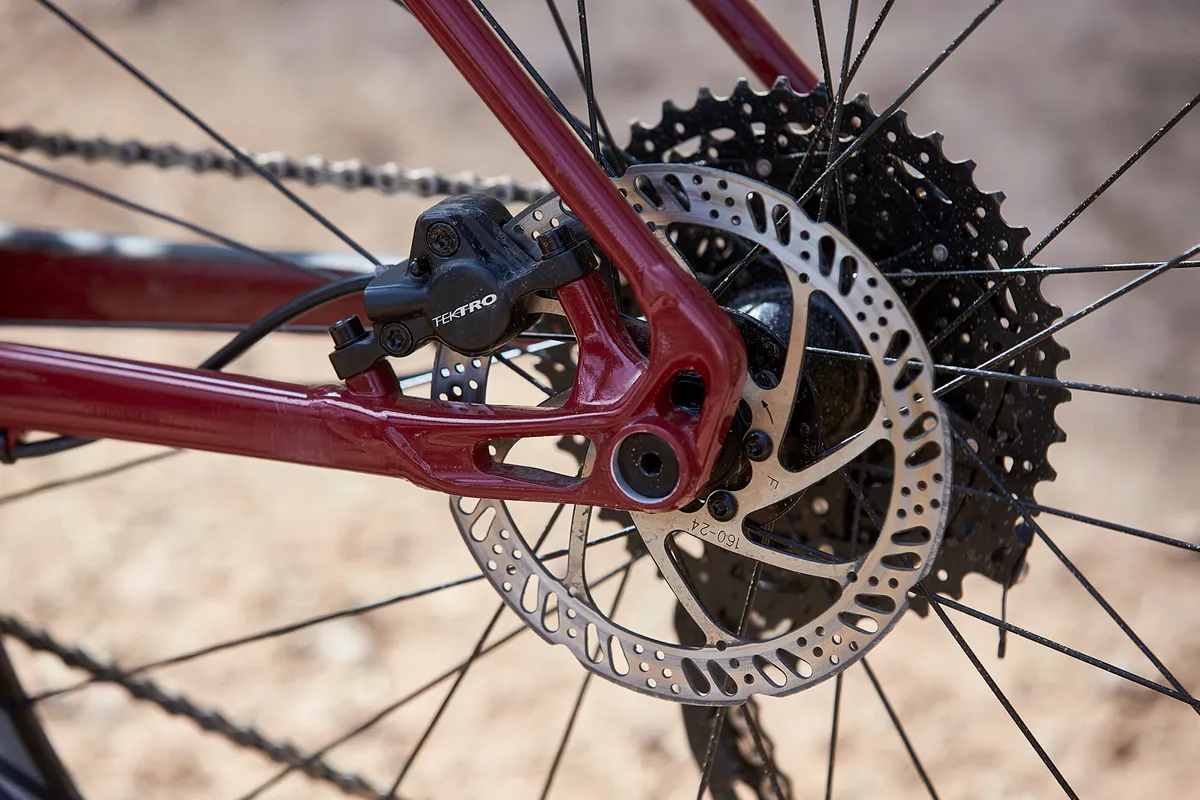
Aside from a few niggles with the geometry (more on that later), the only aspect of the frame design that I didn’t like was the relatively high top tube.
Even with the handlebar raised up as far as it would go (by placing all the spacers under the stem), the shifter would contact the top tube when the bar was turned through 90 degrees. This makes it more likely that you’ll damage the frame and/or shifter in a crash.
Specialized Fuse 27.5 kit
The highlight of the Spesh’s spec sheet is the Trans-X dropper post, which offers 115mm of drop (by my measurements) and can be set anywhere in its travel using an ergonomic under-bar remote lever.
RockShox’s Judy TK fork is nice and sturdy too, with a bolt-thru axle. The adjustable air spring makes it easy to adjust for different rider weights and styles, but the TurnKey damping isn’t as sophisticated or forgiving as the Motion Control set-up found in its mid-range forks.
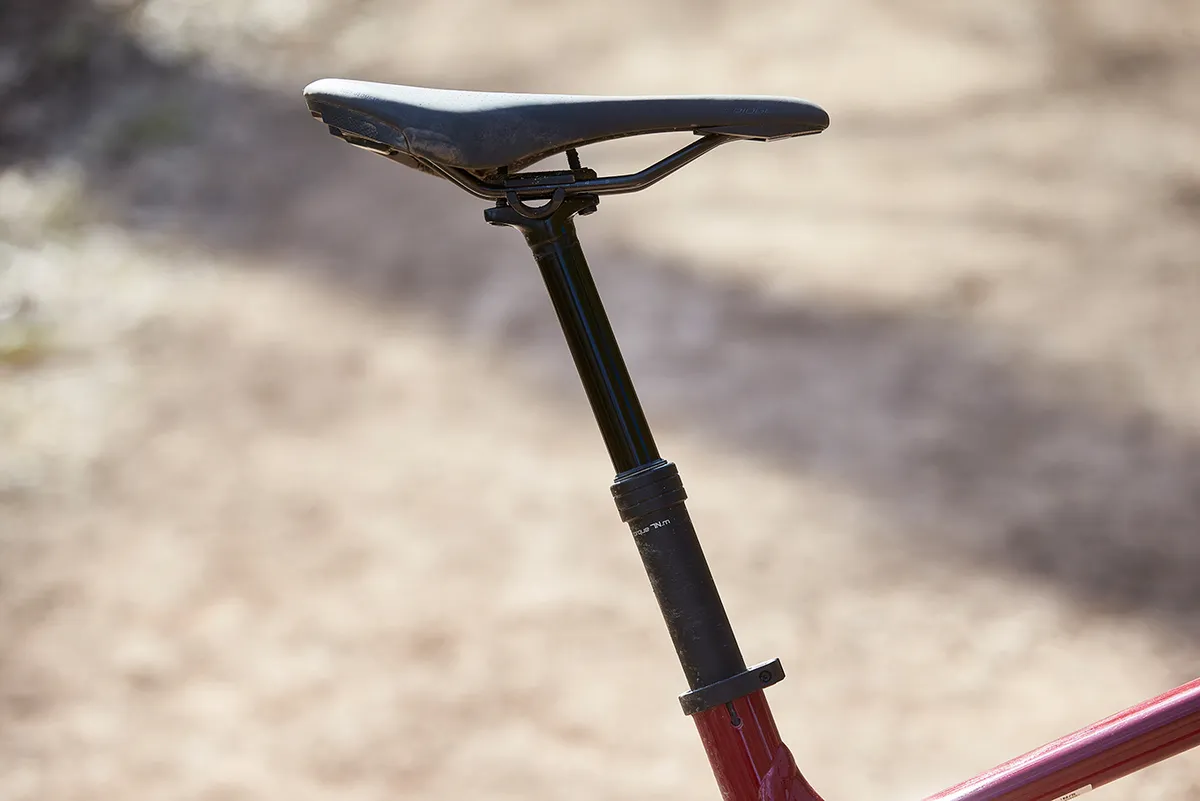
Although Specialized’s website says the Fuse comes with a 30t chainring, my bike had a 28t, which limited speed on pedally descents.
And while the other bikes have 11-46t cassettes, the Fuse makes do with an 11-42t spread, so the bottom gear is no easier.
The square-taper bottom bracket is likely to be less reliable and harder to upgrade than the external BBs found elsewhere here too. Also, Tektro’s M275 stoppers aren’t as powerful as the other bikes’ brakes. I'm a big fan of the Specialized’s comfy saddle and grips though.
Specialized Fuse 27.5 ride impressions
Although the XL Fuse’s 480mm reach (the horizontal distance from the centre of the BB to the centre of the top of the head tube) is pretty roomy on paper, its short stack height (the vertical distance from the BB to the top of the head tube) makes it feel much smaller.
Combined with the short 45mm stem and low-rise bar, this makes it feel comparatively cramped. At 6ft 3in / 190cm tall, the bar felt too low and too close for my liking.
When climbing, this made the bike feel a little awkward and fiddly, especially when pedalling out of the saddle. Riding seated, the position was fine unless tackling very steep gradients, when it felt like my weight was too far over the back, due to the 73.4-degree effective seat tube angle.
This, combined with the stubby stem and short effective reach, also makes it harder to keep the front wheel on the ground on steep climbs.
Shorter riders won’t find the Fuse as cramped, although the long seat tube does make it difficult to ‘size up’ from the smaller frames to get extra reach.
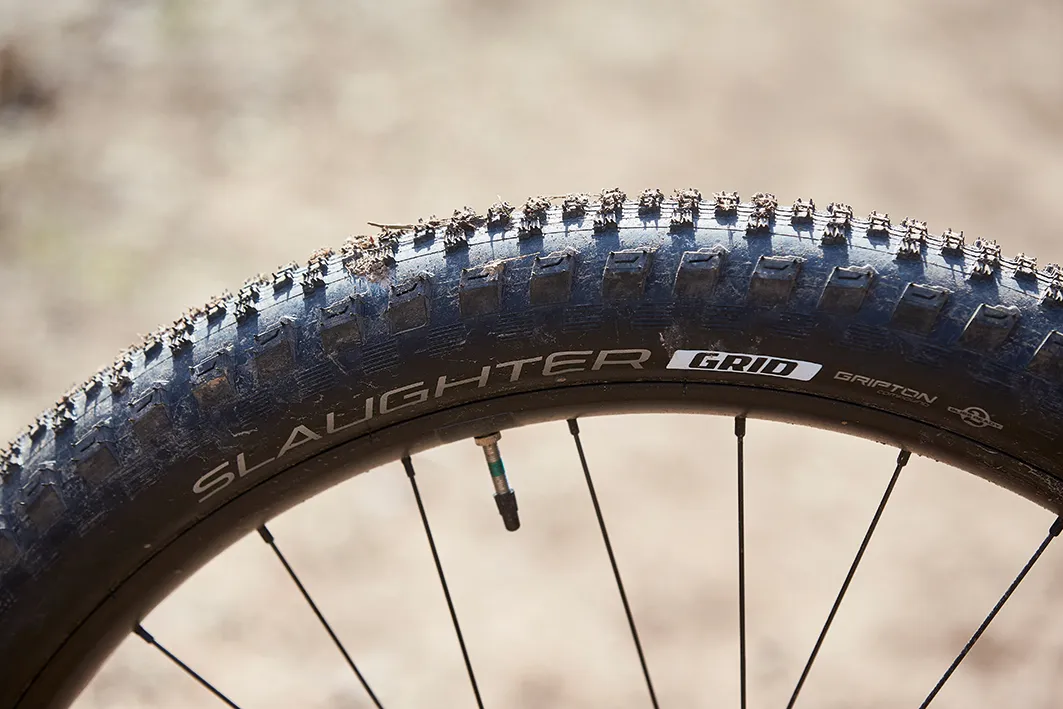
At 14.25kg, this isn’t a light bike, and while the plus tyres are surprisingly fast-rolling over bumpy terrain, they can make it feel a little numb and slower to respond to pedal inputs.
This may be more about the perception of speed than actual speed, though. The lowest gear is small enough for most situations and the 2.8in Slaughter rear tyre offers great traction on loose, bumpy surfaces, so you can get up some tricky scrambles. (In muddy conditions, the semi-slick rear tyre isn’t so great, though.)
The easy-to-use dropper keeps the ride flowing on undulating terrain, with no need to stop to drop the saddle.
Meanwhile, the big tyres help the bike to cover bumpy, rooty terrain with less fuss, and they feel less jarring than skinnier rubber on larger-diameter wheels. That makes the Fuse a comfortable and efficient bike for crossing rough and soft ground.
Like a tractor on the road, it’ll bounce and oscillate after hitting a bump as the tyre rebounds, but this is preferable to the harsher feel of smaller rubber.
The tyres are undoubtedly slower on tarmac than narrower equivalents, but not as draggy as you might imagine. Even so, I occasionally ran up against the speed limit imposed by the titchy chainring on gentle descents.
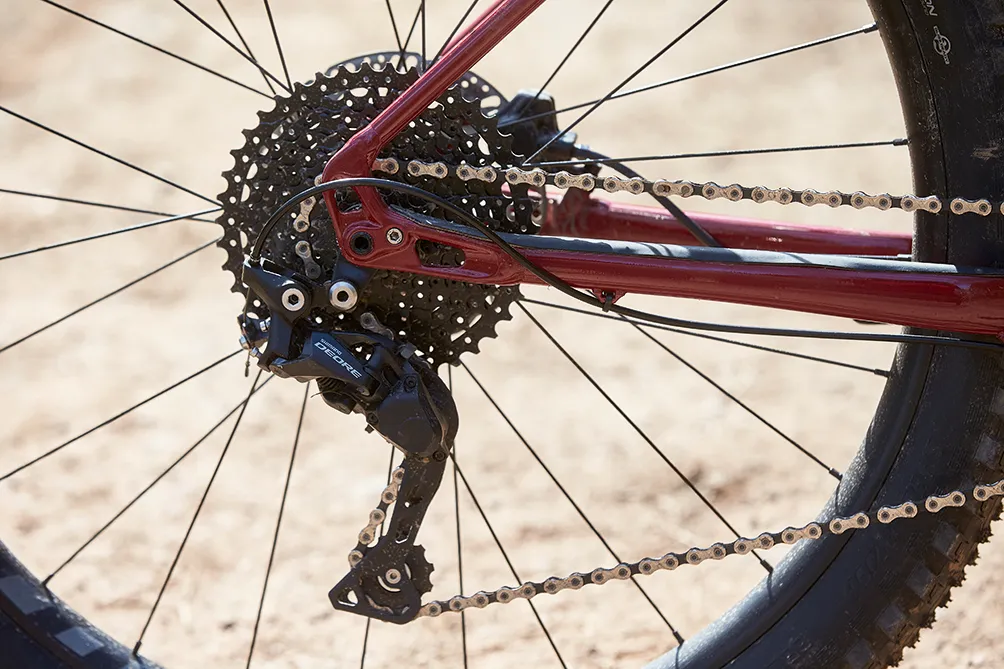
On rough and technical downhills, the plus tyres offer a real advantage. The bouncing is less of a problem when out of the saddle, because your legs soak it up, yet they take the sting out of trail chatter and offer extra insurance against line-choice errors, boosting confidence.
They also have incredible cornering and braking traction in most conditions, although the rear is slippery in the wet. Just be sure to get the pressures right, so they don’t become too vague when pushed hard in berms (6 to 7psi softer than a regular 2.3in tyre).
The Fuse’s low front-end and cramped cockpit make it harder to let it run when the terrain gets steep and technical. When rattling down technical root spreads or railing turns, I wasn’t as comfortable or controlled as on the Calibre or Vitus, both of which felt more stable and predictable.
Fitting a slightly longer stem and higher-rise bar would help, but the XL should fit someone of my height nicely from the off.
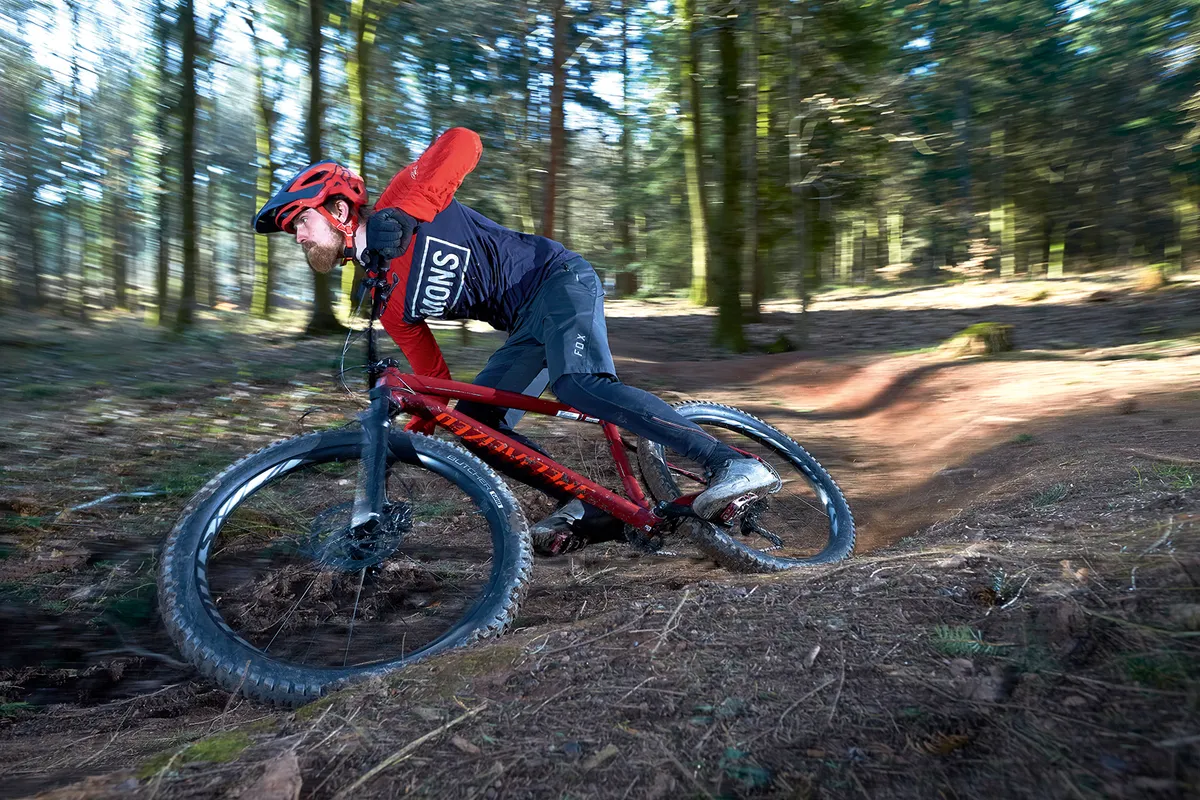
While the RockShox Judy Silver is no bad fork for the price, I needed to set it up firm to hold the front of the bike up under braking.
This, along with the unsophisticated damper, makes it feel harsher than the other forks, despite the extra cushioning from the big tyre. Add the Tektro brakes, which always feel like they haven’t bedded in, and controlling the bike on steep descents becomes a hard forearm workout due to the extra strength required to slow down.
My main issue with the Fuse, though, is the fit. The XL bike I tested is just too cramped for the people it’s designed for. Smaller riders may find the sizing more suitable though, and at least you can pop into your local Specialized dealer to see how it feels.
If you ride a lot of choppy terrain, the big tyres are a huge bonus so it’s worth a look.
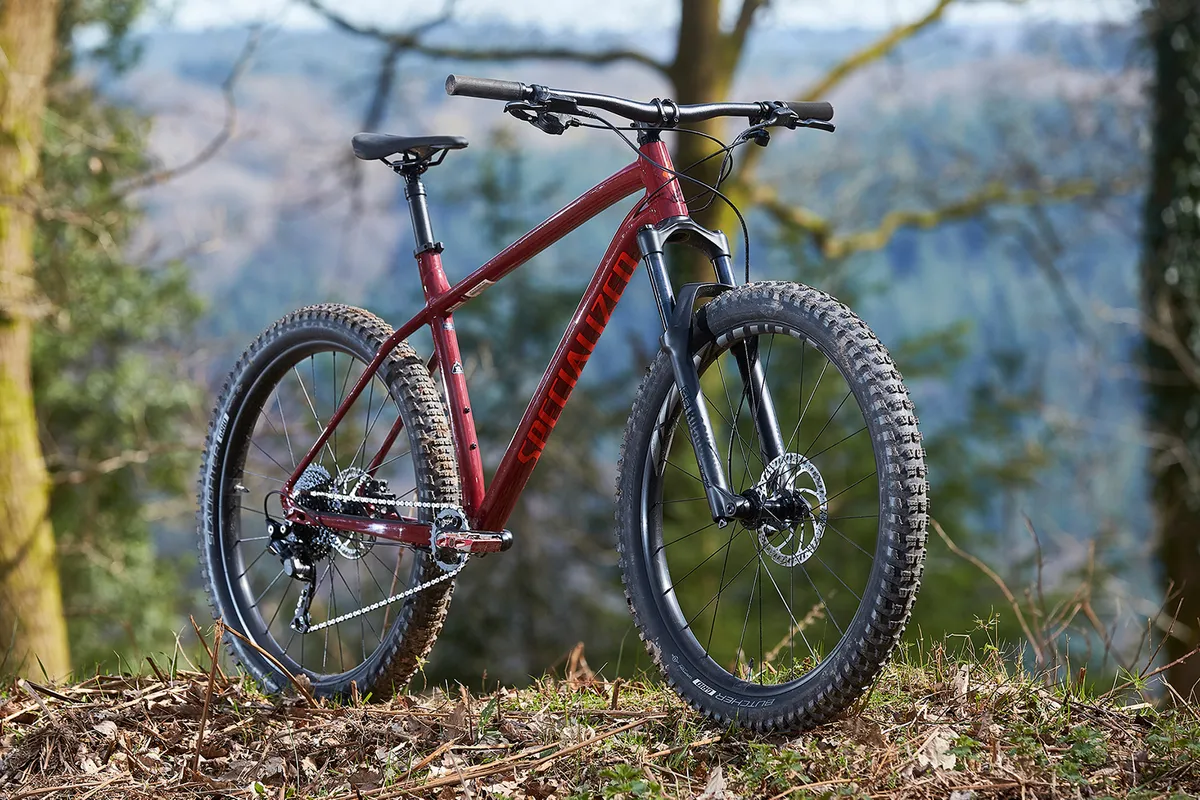
Specialized Fuse 27.5 geometry
- Sizes (* tested): XS, S, M, L, XL*
- Seat angle: 73.4 degrees
- Head angle: 67 degrees
- Chainstay: 43cm / 16.93in
- Seat tube: 51cm / 20.08in
- Top tube: 67cm / 26.38in
- Head tube: 13.5cm / 5.31in
- Fork offset: 4.2cm / 1.65in
- Trail: 11.3cm / 4.45in
- Bottom bracket drop: 4.8cm / 1.89in
- Bottom bracket height: 31.2cm / 12.28in
- Wheelbase: 1,205mm / 47.44in
- Stack: 63cm / 24.8in
- Reach: 48cm / 18.9in
How we tested
This bike was tested as part of a three bike grouptest of top-value trail hardtails priced at under £1,000.
Luckily, we measured-up, tested and shot these bikes before the UK went into Covid-19 lockdown. There wasn’t time to thoroughly test a fourth bike to our usual standards, however, but if you want the most capable trail bike for under a grand, you should be well served by these bikes.
Bikes also on test:
Product
| Brand | Specialized |
| Price | A$1800.00, £999.00, $1250.00 |
| Weight | 14.25kg |
Features
| Fork | RockShox Judy Silver TK, 130mm (5.1in) travel |
| Stem | Specialized Stout, 45mm |
| Chain | KMC X10 |
| Frame | A1 aluminum alloy |
| Tyres | Specialized Butcher Grid Trail (f) and Specialized Slaughter Grid Trail (r) 27.5x2.8in |
| Brakes | Tektro M275, 180/160mm rotors |
| Cranks | Specialized Stout, 28t |
| Saddle | Specialized Body Geometry Bridge |
| Wheels | Specialized Stout Trail 38mm internal width |
| Headset | Integrated |
| Shifter | Shimano Deore |
| Cassette | SunRace, 11-42t |
| Seatpost | TranzX 115mm (measured) dropper |
| Grips/tape | Specialized Trail lock-on |
| Handlebar | Specialized Stout, 780mm |
| Bottom bracket | Square-taper, internal |
| Available sizes | XS, S, M, L, XL |
| Rear derailleur | Shimano Deore (1x10) |
| Features | Hubs: Specialized Stout hubs Axles: 15x110mm Boost (f) / 12x148mm Boost (r) Spokes count: 24 (f), 28 (r) |
